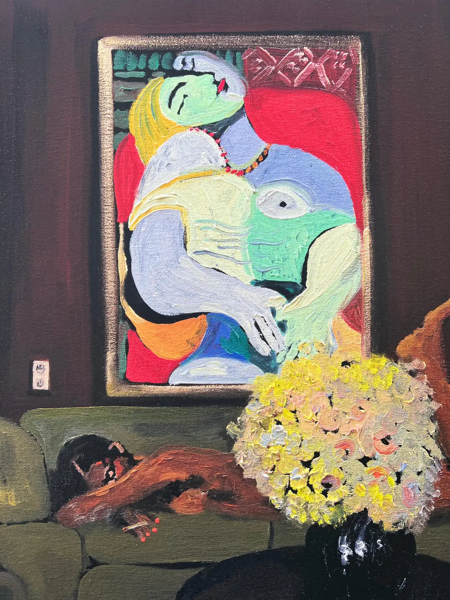The Quiet Behind the Ideas
Our current moment prizes speed, visibility, and relentless production. The idea of rest has become almost radical. The rhythm of the world insists on acceleration — more content (the clock has to be ticking on this word by now…), more noise, more urgency. Even the creative fields that once prided themselves on introspection have been swept into a cycle of constant output. The artist’s studio has become a livestream, the writer’s solitude a branded productivity tip. To slow down now feels almost countercultural.
But across disciplines, a quiet resistance is forming. One that values slowness not as evidence of lack of ambition, but as an act of preservation. Ceramicists allowing their materials to dictate the pace. Musicians rediscovering silences as composition. Designers moving off the Fashion Week calendar and reclaiming the space and time to concept collections on their own terms. Writers embracing revision not as delay but as devotion. But what if doing less isn’t laziness? What if it’s a quicker path to precision?
Creative rest isn’t the same as withdrawal. It’s not about disappearance or disengagement, but about turning inward long enough to remember why you make things in the first place. The world doesn’t stop pressing in, but rest becomes a way to meet it with more clarity, a kind of interior recalibration. In that stillness, attention sharpens. Work deepens. The noise recedes just enough to hear yourself think again.
This call for rest also sits inside a larger, more fraught cultural moment. The political climate has rarely felt heavier — acute anxiety, injustice, war, and environmental dread have turned collective fatigue into a kind of shared language. The constant scrolling between crisis and performance erodes focus; it’s difficult to feel imaginative when the ground beneath us feels unstable and increasingly porous. For many, rest is not only restorative but necessary for survival, a refusal to let exhaustion define one’s relationship to the world.
Slowing down is a form of intelligence. To resist speed for the sake of speed is to protect nuance, to hold on to complexity when the world demands shallow simplicity. The creative process is a cycle. It’s expansion and contraction, output and retreat. The most resonant ideas often emerge not in the rush of deadlines but in the quiet little pockets between them, when our mind is unguarded enough to wander, and maybe even when we are thinking of something else entirely.
As we move through another season that feels both accelerated and uncertain, there’s value in remembering that to pause is not to lose momentum, it’s to honor process. Rest is the space where perspective realigns, where beauty has time to surface and take a breath. Perhaps the point isn’t to keep up at all, but to keep faith with the work itself: deliberate and unbothered by pace.
Above: Danielle McKinney, Sandman, 2024, oil on linen

